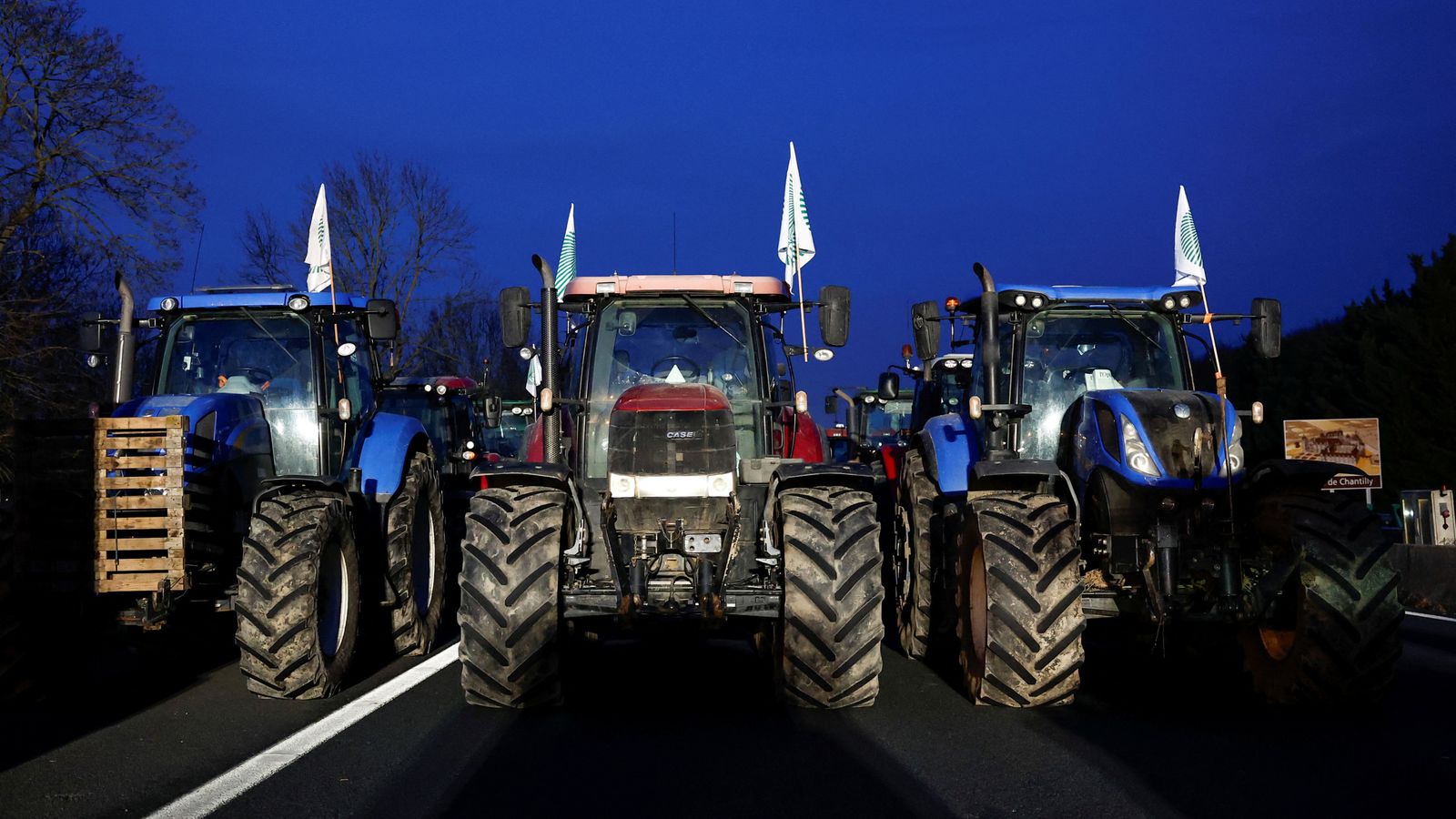Paris is slowly being encircled.
From a variety of directions, the farmers are heading towards the French capital, bringing their anger to the heart of the nation.
Eight hundred tractors surround the city.
Since these protests erupted, they have, from a Parisian perspective, happened in other places, to other people.
The motorways across much of the nation may have been brought to a standstill, but not here. Not until now.
And while the fury of farmers may resonate loudly in those huge stretches of France where agriculture is still central to everyday life, that hasn’t happened so much in Paris.
This extraordinary metropolis is, like London or New York, beset with boundless urban problems. It takes a lot for Parisians to start worrying about French farmers.
But now, that surely will change. As tractors and other agricultural vehicles ease their way noisily towards the capital, so Paris frets.
Could Paris be ‘starved’ by the protests?
The protest organisers have designated eight “choke points” that they are using to upset the flow of traffic.
The idea is, depending on who you believe, either to cause enough disruption to focus the minds of millions across the city or, more bluntly, to “starve” the population.
The spectre of starvation is an exaggeration, of course, but even the government’s own agency, Ademe, has estimated that Paris has only three days’ supplies of food, were it to be cut off.
Hyperbole is as much part of this protest as any other. But the rhetoric, backed up by the sight of hundreds of tractors driving down the main highways towards Paris, has certainly focused attention.
Aware of the protesters’ plans to encircle Paris, the government has called up 15,000 police officers. That’s not just to hold back the farmers but also to reassure a nervous city.
The government has held an emergency meeting of ministers. Tensions are high.
Giant fresh food market ‘is the target’
And so we find ourselves standing outside Rungis International Market, an absolutely enormous complex dedicated to the sale of fresh food.
This is Europe’s biggest produce market – the second-largest wholesale food market in the world. And right now, it is being protected by armoured police vehicles.
The market is a controversial focus for the farmers’ protests.
Some believe it should be left alone, seeing as it is so key to their own prosperity.
But others maintain that the only way Paris will understand the value of its farming community is when it is cut off from their produce.
“Rungis market is the target,” said Veronique Le Floc’h, president of Rural Co-ordination, an agricultural trade union.
Read more:
Woman sitting on haystack killed after car hits protesting farmers’ roadblock
Nothing left to chance
The armoured vehicles sit outside the front entrance of the market, dark blue and looming.
Each has a turret, capable of firing grenades and even bullets. They are made of uncompromising thick metal. There is nothing gentle about this.
Around them are arranged the vans of the CRS, the French riot police familiar from so many protests over the years.
Not far away, a water cannon has been parked up. Not much is being left to chance here.
So far, the police response to this growing protest movement has been conciliatory. Blockades have been tolerated, disruption accepted.
But the simple truth is this: what can be accepted in the provinces will not be tolerated on the streets of Paris.
The spectre of the French capital being held to ransom is politically unacceptable.
Gabriel Attal, the 34-year-old prime minister, who’s only been in the job for a few weeks, is already confronted with his first crisis of leadership.
But while the politicians and the police mull their response, so the tractors rumble forward.
They have already erected blockades on the main highways in and out of Paris. And more farmers are on the way.








